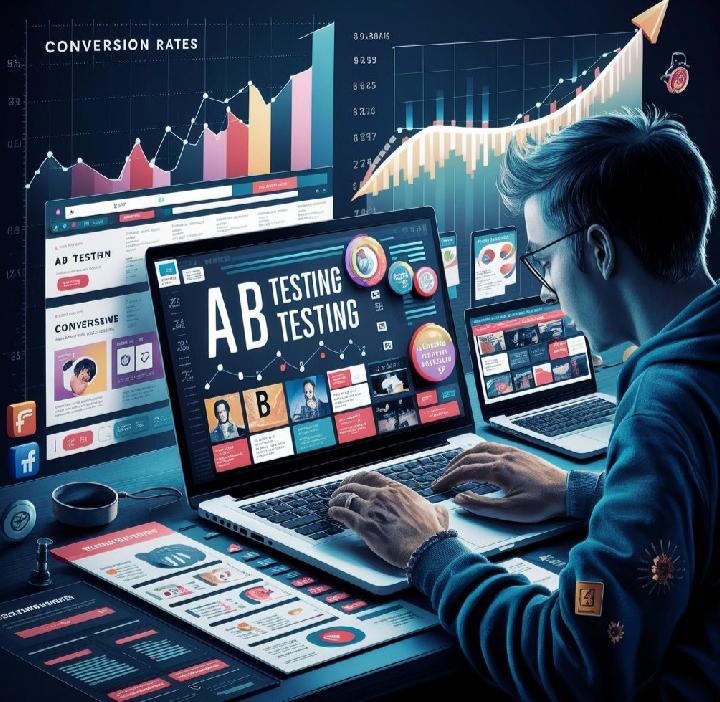Introduction Lead Generation Chatbots
What is a Chatbot? Chatbots, AI-powered software applications designed to simulate conversation with users are typically delivered through messaging platforms. Due to their ability engage potential customers in an efficient and personalized manner, they are increasingly popular as part of lead generation strategies.
Chatbots and Lead Generation Lead Generation chatbots are virtual assistants who interact with visitors to websites or users of social media, gathering valuable information about them and guiding through the sales funnel. They can provide information and answer questions, or even qualify leads prior to passing them along to sales representatives.

Chatbots: Benefits and Uses for Lead Generation
24/7 Accessibility: The chatbots are available to users around the clock and can respond quickly to queries.
Scalability : chatbots are able to handle multiple conversations at once, allowing business to reach a wider audience.
Data collection: chatbots can collect valuable data about user preferences and behavior, assisting in targeted marketing.
Designing a Lead Generation Chatbot
Understanding your Target Audience It’s important to understand the needs, pains, and communication preferences of your audience before creating a chatbot for lead generation. This will allow you to tailor your bot’s responses and messages so that they resonate with potential leads.
Crafting Conversational flow The key to creating an effective lead generation chatbot is developing engaging and natural-sounding conversations flows. Mix open-ended questions with multiple-choice answers and proactive suggestions in order to engage users and get them to share valuable information.

Integrating chatbots with CRM Systems Integrated lead generation chatbots and CRM systems allow for seamless data transfers between your chatbot and sales team. This integration streamlines the lead qualification and following-up processes. It improves overall efficiency.
Implementing Lead Generation Strategies With Chatbots
Provide Personalized Recommendations Businesses can use user data collected from chatbot interactions to offer tailored product recommendations or tailored solution to potential leads. This personalization improves the user experience and increases the likelihood of converting leads to customers.
Qualifying leads through chatbot interactions Lead-generation chatbots are able to use predefined criteria in order to qualify prospects based on the responses and behaviors of their users. Businesses can save time and resources by automating the process.
Lead Nurturing Processes The role of chatbots in lead nurturing is vital. They send targeted follow-ups, provide relevant content and guide potential leads through their decision-making processes. Consistent communication builds trust and improves conversion rates.
Measuring Chatbot Performance
Tracking KPIs and Key Metrics In order to assess the effectiveness your lead generation bot, track key metrics like engagement rates, lead quality, and conversion rates. These insights can be used to optimize your chatbot strategy over time and refine it.
A/B Chatbot Scripts By conducting A/B testing on chatbot scripts, you can identify the messages and conversational flows that resonate with your audience. You can improve the effectiveness of your chatbot by testing and analyzing variations.

Continuously improving User Experience Ask for feedback regularly from users, and monitor chatbot interaction to identify improvement areas. Optimizing chatbot functionality and implementing user suggestions will ensure a positive experience for users and encourage long-term engagement.
Best practices for lead generation chatbots
Setting Clear Goals Before you deploy a lead generation bot, define goals and objectives that are aligned to your marketing strategy. Setting specific goals will help guide the design and implementation of your chatbot, whether it is to increase lead conversion rates or improve customer satisfaction.
Seamless User Interfaces Create a chatbot that provides a seamless user interface. Avoid convoluted or complex conversational flows, which may confuse users. To encourage engagement, keep interactions direct, simple and easy to understand.
Regular Updates Be proactive by monitoring the performance of your lead generation bot and fixing any problems as soon as they arise. Update chatbot scripts regularly, add new features and provide ongoing customer support to maximize lead generation and ensure a positive experience for users.

Conclusion
Lead generation chatbots are a powerful way to engage with prospects, qualify them, and nurture relationships through the entire sales process. Businesses can improve their lead generation efforts by leveraging chatbot technology, implementing best practices and driving meaningful results.
For more information on how our branding services can help you, contact us today. Together, we can create a strong, recognizable brand that stands out in the digital landscape.
FAQs:
Can chatbots substitute human interaction for lead generation?
Chatbots are a great way to automate some aspects of lead generation. However, humans remain valuable in personalized engagement and complex questions. Lead generation can be balanced by combining chatbot technology and human support.
How can I make sure my chatbot is GDPR-compliant?
Implement measures to protect data and obtain consent from users for processing data. Provide transparent privacy policies. Consult legal experts to make sure your chatbot adheres to data protection standards.
What are the common mistakes that you should avoid when using chatbots to generate leads?
Avoiding lead generation bots that are too promotional, have a lack of personalization and complex conversational flow, as well as not having enough training to handle user queries, are all common mistakes. Businesses can avoid these pitfalls by focusing on the user experience and creating value.

